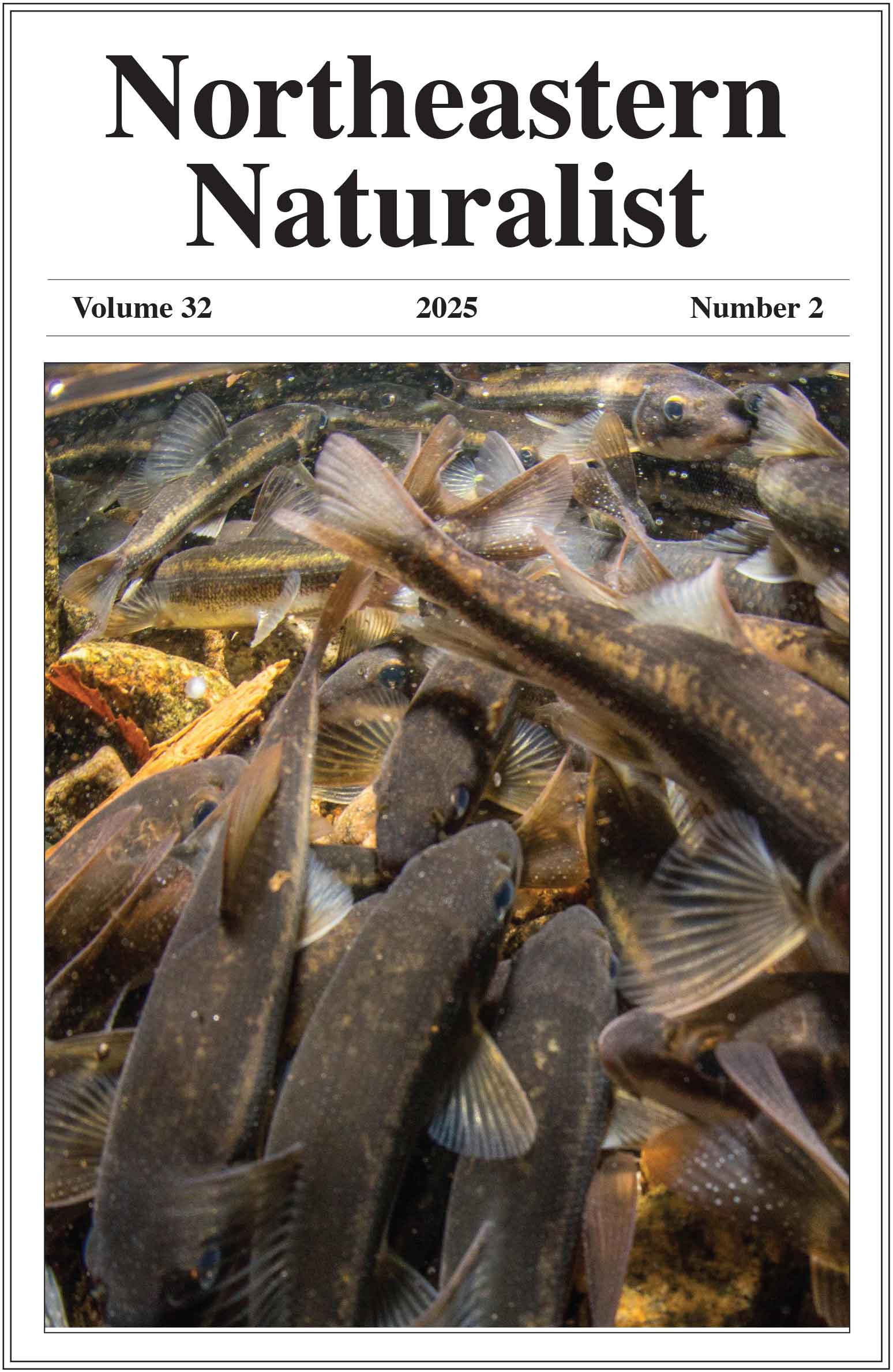Long-term Observations of Culm Heights of Invasive Phragmites australis Subjected to Three Different Control Methods in a Small Urban New England Saltmarsh
Alan M. Young*
*Biology Department, Salem State University, Salem, MA 01970.
Northeastern Naturalist, Volume 31, Issue 3 (2024): 283–299
First published early online: 3 August 2024
Abstract
In the US, Phragmites australis ssp. australis (European Common Reed) generally is considered to be a harmful invasive species whose dense monoculture stands greatly reduce species diversity. I examined the effectiveness of 3 control measures in discrete stands of European Common Reed along the perimeter of a small urban New England saltmarsh. Cutting, cutting plus application of an herbicide, and increasing salinity via excavation to reduce elevation along with ditching to enhance tidal flow into the marsh, were compared. I measured culm heights as a measure of plant vigor over a period of 15 years. Three years of cutting culms, with or without treatment with the organic herbicide Burn-Out II®, was not a successful control. The only moderately successful control (2–26% reduction in height) involved increased inundation with seawater, which increased salinity by 33%. Any excavation of a European Common Reed stand should include precautions to avoid establishing a new stand in the spoils dewatering area.
![]() Download Full-text pdf (Accessible only to subscribers. To subscribe click here.)
Download Full-text pdf (Accessible only to subscribers. To subscribe click here.)
Access Journal Content
Open access browsing of table of contents and abstract pages. Full text pdfs available for download for subscribers.
Issue-in-Progress: Vol. 32 (3) ... early view
Check out NENA's latest monograph and Special Issue:













 The Northeastern Naturalist is a peer-reviewed journal that covers all aspects of natural history within northeastern North America. We welcome research articles, summary review papers, and observational notes.
The Northeastern Naturalist is a peer-reviewed journal that covers all aspects of natural history within northeastern North America. We welcome research articles, summary review papers, and observational notes.